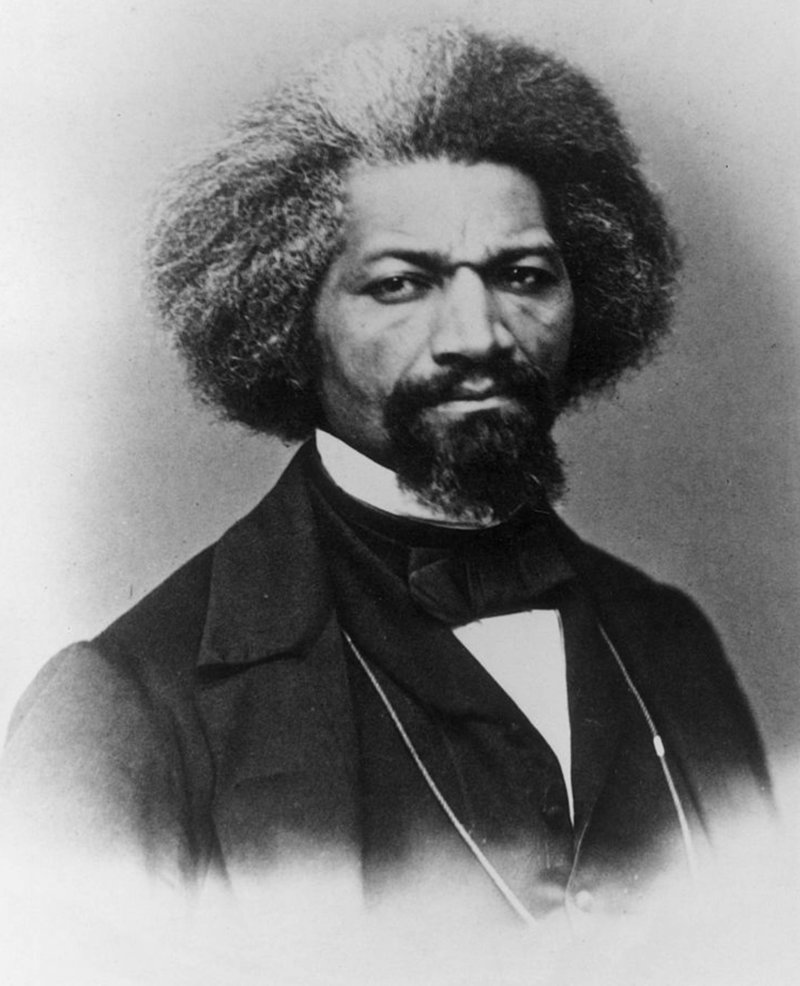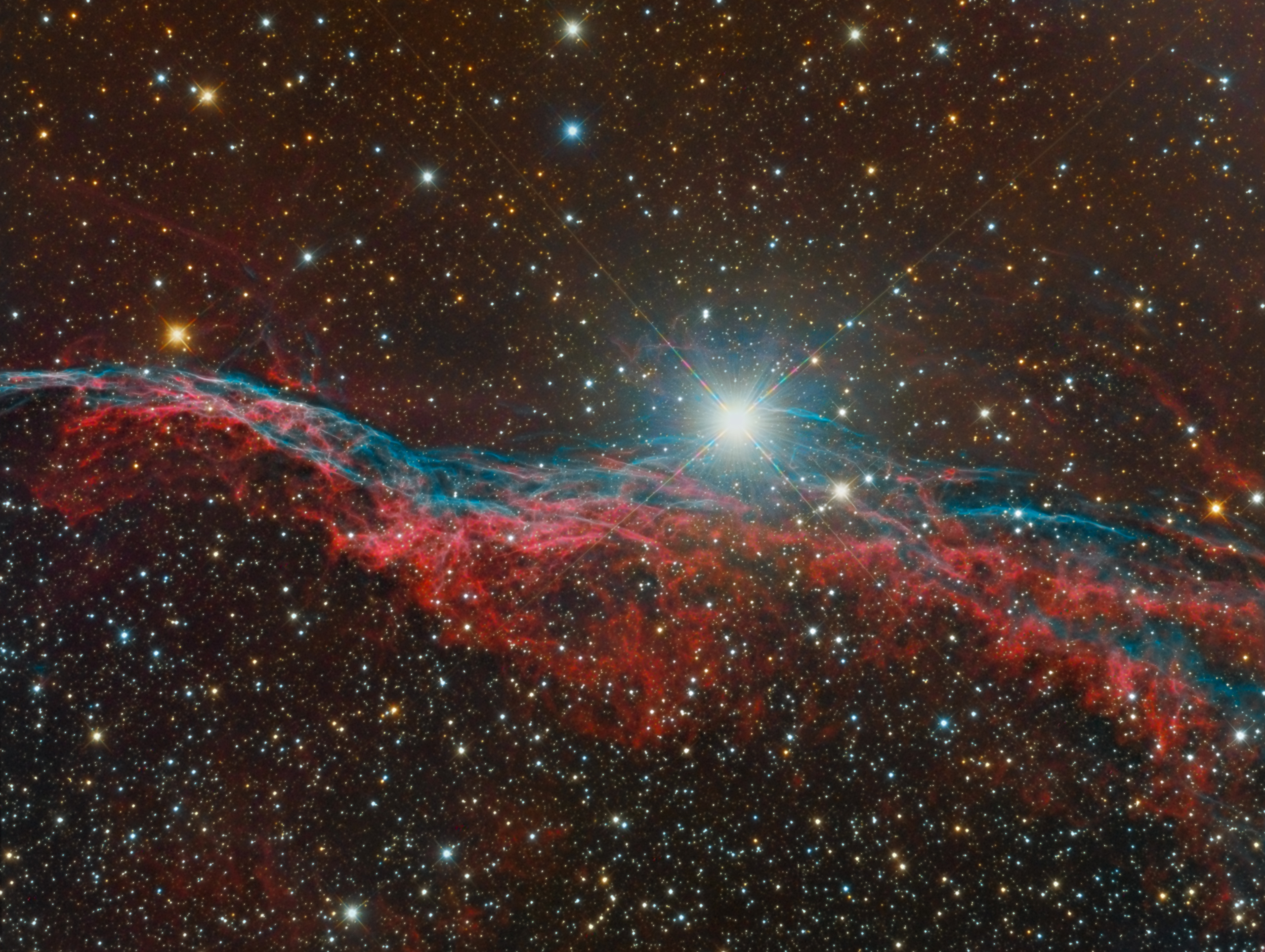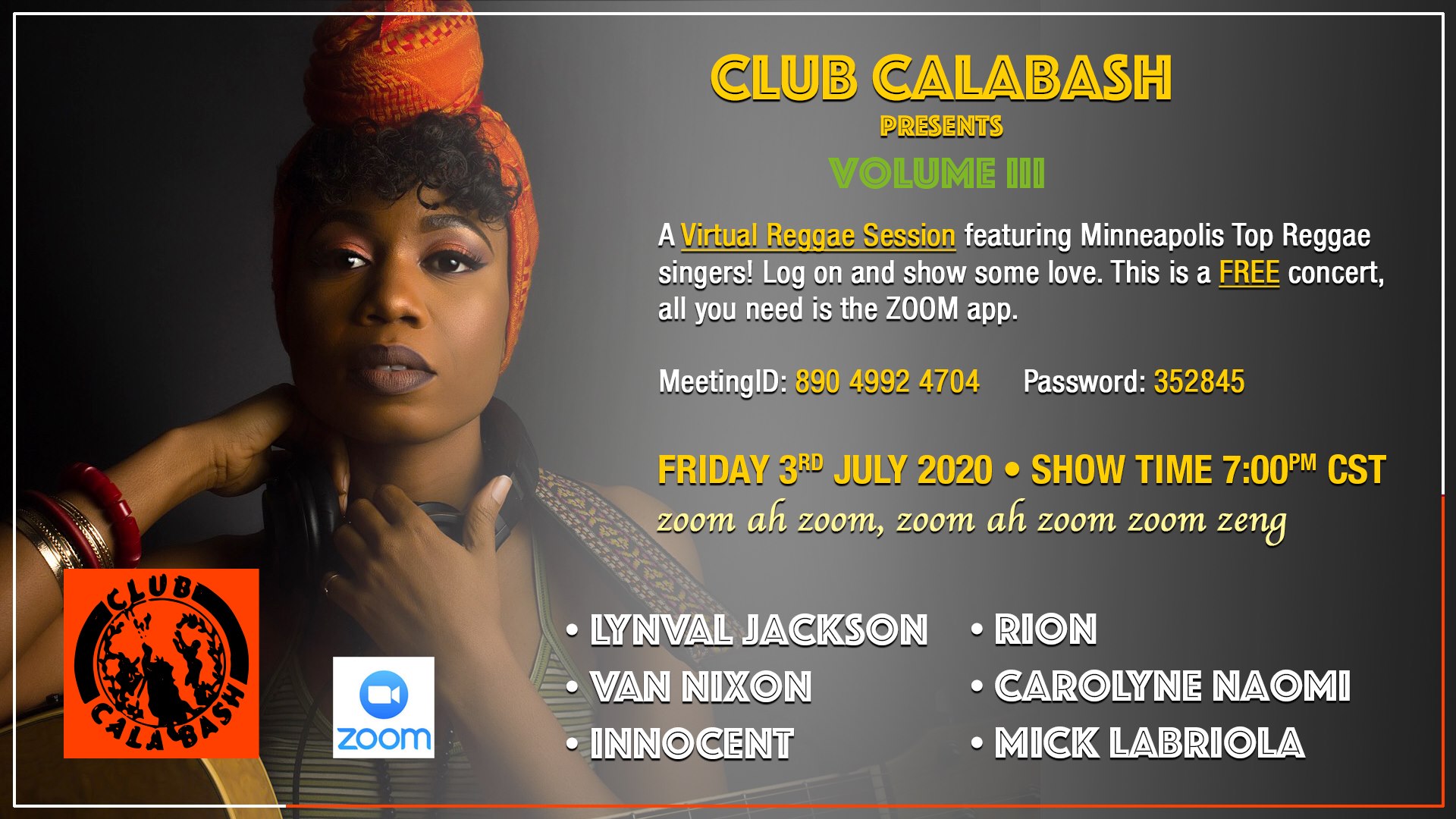Blog
Why would clouds form a hexagon on Saturn? Nobody is sure. Originally discovered during the Voyager flybys of Saturn in the 1980s, nobody has ever seen anything like it anywhere else in the Solar System. Acquiring its first sunlit views of far northern Saturn in late 2012, the Cassini spacecraft’s wide-angle camera recorded this stunning, false-color image of the ringed planet’s north pole. The composite of near-infrared image data results in red hues for low clouds and green for high ones, giving the Saturnian cloudscape a vivid appearance. This and similar images show the stability of the hexagon even 20+ years after Voyager. Movies of Saturn’s North Pole show the cloud structure maintaining its hexagonal structure while rotating. Unlike individual clouds appearing like a hexagon on Earth, the Saturn cloud pattern appears to have six well defined sides of nearly equal length. Four Earths could fit inside the hexagon. Beyond the cloud tops at the upper right, arcs of the planet’s eye-catching rings appear bright blue.

Jaime Royal “Robbie” Robertson, OC (born July 5, 1943), is a Canadian musician, songwriter, film composer, producer, actor, and author. Robertson is best known for his work as lead guitarist and primary songwriter for The Band, and for his career as a solo recording artist.
Robertson’s work with The Band was instrumental in creating the Americana music genre. Robertson has been inducted into the Rock and Roll Hall of Fame and the Canadian Music Hall of Fame as a member of The Band, and has been inducted to Canada’s Walk of Fame, both with The Band and on his own. He is ranked 59th in Rolling Stone magazine’s list of the 100 greatest guitarists.[3] As a songwriter, Robertson is credited for writing “The Weight“, “The Night They Drove Old Dixie Down“, “Up on Cripple Creek“, “Broken Arrow“, “Somewhere Down the Crazy River“, and many others. He has been inducted into the Canadian Songwriters Hall of Fame, and received a Lifetime Achievement Award from the National Academy of Songwriters.
As a film soundtrack producer and composer, Robertson is known for his collaborations with director Martin Scorsese, which began with the rockumentary film The Last Waltz (1978), and continued through a number of dramatic films, including Raging Bull (1980), Casino (1995), The Departed (2006), The Wolf of Wall Street (2013) and The Irishman (2019). He has worked on many other soundtracks for film and television.
more...Arthur Murray Blythe (July 5, 1940 – March 27, 2017) was an American jazz alto saxophonist and composer. He was described by critic Chris Kelsey as displaying “one of the most easily recognizable alto sax sounds in jazz, big and round, with a fast, wide vibrato and an aggressive, precise manner of phrasing” and furthermore as straddling the avant garde and traditionalist jazz, often with bands featuring unusual instrumentation.
Born in Los Angeles, Blythe lived in San Diego, returning to Los Angeles when he was 19 years old. He took up the alto saxophone at the age of nine, playing R&B until his mid-teens when he discovered jazz. In the mid-1960s, Blythe was part of The Underground Musicians and Artists Association (UGMAA), founded by Horace Tapscott, on whose 1969 The Giant Is Awakened he made his recording debut.
After moving to New York in the mid-70s, Blythe worked as a security guard before being offered a place as sideman for Chico Hamilton (1975–77). He subsequently played with Gil Evans‘ Orchestra (1976–78), Lester Bowie (1978), Jack DeJohnette (1979) and McCoy Tyner (also 1979). Blythe’s group – John Hicks, Fred Hopkins and Steve McCall (drummer) – played Carnegie Hall and the Village Vanguard in 1979.
In 1977, Blythe appeared on the LP Rhythmatism, a recording led by drummer Steve Reid. Reviewing in Christgau’s Record Guide: Rock Albums of the Seventies (1981), Robert Christgau highlighted Blythe’s “forceful” alto-saxophone playing and said, “like so many of the new players Blythe isn’t limited to modern methods by his modernism—he favors fluent, straight-ahead Coltrane modalities, but also demonstrates why he belongs on a tune for Cannonball.
more...Overton Amos Lemons (July 5, 1913 – October 7, 1966), known as Smiley Lewis, was an American New Orleans rhythm and blues singer and guitarist. The music journalist Tony Russell wrote that “Lewis was the unluckiest man in New Orleans. He hit on a formula for slow-rocking, small-band numbers like ‘The Bells Are Ringing’ and ‘I Hear You Knocking‘ only to have Fats Domino come up behind him with similar music with a more ingratiating delivery. Lewis was practically drowned in Domino’s backwash.”
Lemons was born in DeQuincy, Louisiana, a rural hamlet near Lake Charles, to Jeffrey and Lillie Mae Lemons. He was the second of three sons. His mother died while he was a child, and later he named a song and several automobiles after her. In his mid-teens, he hopped a slow-moving freight train with some friends, who jumped off when the train began to speed up. Lewis alone remained on the train, getting off when it reached its stop in New Orleans. He found boarding with a Caucasian family in the Irish Channel neighborhood and eventually adopted their surname, Lewis.
He began playing clubs in the French Quarter and “tan bars” in the Seventh Ward, at times billed as Smiling Lewis, a variation of the nicknameearned by his lack of front teeth. He was often accompanied by the pianist Isidore “Tuts” Washington, with whom he played in Thomas Jefferson’s Dixieland band in the mid-1930s. When the band dissolved, Lewis began playing in clubs, earning only tips.
Lewis married Leona Robinson in 1938. The couple lived with her mother until they began having children, when they moved to South Tonti Street, while Lewis worked at manual labor during the day and performed at night. During World War II, he joined Washington again, this time with Kid Ernest Molière’s band, entertaining soldiers stationed at Fort Polk, outside Bunkie, Louisiana, and serving as the house band at the Boogie Woogie Club. The two formed a trio with the drummer Herman Seals after the war ended and again began playing in clubs in the French Quarter and along Bourbon Street.
more... America has been working to fully live up to the ideals laid out in the Declaration of Independence ever since the document was printed on July 4, 1776. So while the U.S. tends to go all out celebrating freedom on the Fourth of July, alternate independence commemorations held a day later often draw attention to a different side of that story, with readings of the Frederick Douglass speech best known today as “What to the Slave is the Fourth of July?”
America has been working to fully live up to the ideals laid out in the Declaration of Independence ever since the document was printed on July 4, 1776. So while the U.S. tends to go all out celebrating freedom on the Fourth of July, alternate independence commemorations held a day later often draw attention to a different side of that story, with readings of the Frederick Douglass speech best known today as “What to the Slave is the Fourth of July?”
The speech was originally delivered at a moment when the country was fiercely locked in debate over the question of slavery, but there’s a reason why it has remained famous more than 150 years after emancipation, says David Blight, author of the 2019 Pulitzer Prize winning biography Frederick Douglass: Prophet of Freedom.
To some, celebrations of American independence on July 4 are a reminder of the country’s hypocrisy on the matter of freedom, as slavery played a key role in the nation’s history; even today, America’s history of racism is still being written, while other forms of modern-day slavery persist in the U.S. and around the world. For those who feel that way, July 5 may be an easier day to celebrate: on that day in 1827, 4,000 African Americans paraded down Broadway in New York City to celebrate the end of slavery in their state.
One person who felt that way was Douglass, the famous abolitionist, who was himself born into slavery. When the Ladies Anti-Slavery Society of Rochester, N.Y., invited Douglass to give a July 4 speech in 1852, Douglass opted to speak on July 5 instead.
Addressing an audience of about 600 at the newly constructed Corinthian Hall, he started out by acknowledging that the signers of the Declaration of Independence were “brave” and “great” men, and that the way they wanted the Republic to look was in the right spirit. But, he said, speaking more than a decade before slavery was ended nationally, a lot of work still needed to be done so that all citizens can enjoy “life, liberty, and the pursuit of happiness.” Above “your national, tumultuous joy” — the July 4th celebrations of white Americans — were the “mournful wails of millions” whose heavy chains “are, today, rendered more intolerable by the jubilee shouts that reach them.”
In the oration’s most famous passages, Douglass discussed what it felt like to see such festivities and to know independence was not a given for people like him:
What have I, or those I represent, to do with your national independence? Are the great principles of political freedom and of natural justice, embodied in that Declaration of Independence, extended to us? and am I, therefore, called upon to bring our humble offering to the national altar, and to confess the benefits and express devout gratitude for the blessings resulting from your independence to us?…
I say it with a sad sense of the disparity between us. I am not included within the pale of glorious anniversary! Your high independence only reveals the immeasurable distance between us. The blessings in which you, this day, rejoice, are not enjoyed in common. The rich inheritance of justice, liberty, prosperity and independence, bequeathed by your fathers, is shared by you, not by me. The sunlight that brought light and healing to you, has brought stripes and death to me. This Fourth July is yours, not mine. You may rejoice, I must mourn…
What, to the American slave, is your 4th of July? I answer; a day that reveals to him, more than all other days in the year, the gross injustice and cruelty to which he is the constant victim. To him, your celebration is a sham; your boasted liberty, an unholy license; your national greatness, swelling vanity; your sounds of rejoicing are empty and heartless; your denunciation of tyrants, brass fronted impudence; your shouts of liberty and equality, hollow mockery; your prayers and hymns, your sermons and thanksgivings, with all your religious parade and solemnity, are, to Him, mere bombast, fraud, deception, impiety, and hypocrisy — a thin veil to cover up crimes which would disgrace a nation of savages. There is not a nation on the earth guilty of practices more shocking and bloody than are the people of the United States, at this very hour.
Douglass’ speech also foreshadowed the bloody reckoning to come: Civil War. “For it is not light that is needed, but fire; it is not the gentle shower, but thunder,” he said. “We need the storm, the whirlwind, and the earthquake.”
Get your history fix in one place: sign up for the weekly TIME History newsletter
At the time Douglass spoke, Blight says, the opportunity was ripe for a lecture on the moral crisis.
“Uncle Tom’s Cabin had just been published that spring and was taking the country by storm. The country was in the midst of crises over fugitive slave rescues in the wake of the Fugitive Slave Act of 1850. The political party system was beginning to tear itself asunder over the expansion of slavery,” he says. “It’s also an election year; the 1852 presidential election was heating up that summer. The Nativist party is rising. It’s an extraordinary political moment.”
more...https://www.youtube.com/watch?v=Io6HwRadjU4
more...Ten thousand years ago, before the dawn of recorded human history, a new light would have suddenly have appeared in the night sky and faded after a few weeks. Today we know this light was from asupernova, or exploding star, and record the expanding debris cloud as the Veil Nebula, a supernova remnant. This sharp telescopic view is centered on a western segment of the Veil Nebula cataloged as NGC 6960 but less formally known as the Witch’s Broom Nebula. Blasted out in the cataclysmic explosion, the interstellar shock wave plows through space sweeping up and exciting interstellar material. Imaged with narrow band filters, the glowing filaments are like long ripples in a sheet seen almost edge on, remarkably well separated into atomic hydrogen (red) and oxygen (blue-green) gas. The complete supernova remnant lies about 1400 light-years away towards the constellation Cygnus. This Witch’s Broom actually spans about 35 light-years. The bright star in the frame is 52 Cygni, visible with the unaided eye from a dark location but unrelated to the ancient supernova remnant.

William Harrison Withers Jr. (July 4, 1938 – March 30, 2020) was an American singer-songwriter and musician. He recorded several major hits, including “Ain’t No Sunshine” (1971), “Grandma’s Hands” (1971), “Use Me” (1972), “Lean on Me” (1972), “Lovely Day” (1977), and “Just the Two of Us” (1980). Withers won three Grammy Awards and was nominated for six more. His life was the subject of the 2009 documentary film Still Bill.[1] He was inducted into the Songwriters Hall of Fame in 2005 and Rock and Roll Hall of Fame in 2015. Two of his songs were inducted into the Grammy Hall of Fame. Withers worked as a professional musician for just 15 years, from 1970 to 1985, after which he moved on to other occupations.
Withers, the youngest of six children, was born in the small coal-mining town of Slab Fork, West Virginia on July 4, 1938. He was the son of Mattie (Galloway), a maid, and William Withers, a miner. He was born with a stutter and later said he had a hard time fitting in. His parents divorced when he was 3, and he was raised by his mother’s family in nearby Beckley. He was 13 years old when his father died. Withers enlisted in the United States Navy at the age of 17, and served for nine years, during which time he became interested in singing and writing songs.
He left the Navy in 1965, and relocated to Los Angeles in 1967 to start a music career. Withers worked as an assembler for several different companies, including Douglas Aircraft Corporation, while recording demo tapes with his own money, shopping them around and performing in clubs at night. When he debuted with the song “Ain’t No Sunshine” in 1971, he refused to resign from his job because he believed the music business was a fickle industry.
more...Fred Wesley (born July 4, 1943) is an American trombonist who worked with James Brown in the 1960s and 1970s and Parliament-Funkadelic in the second half of the 1970s.
Wesley was born the son of a high school teacher and big band leader in Columbus, Georgia, and raised in Mobile, Alabama. As a child he took piano and later trumpet lessons. He played baritone horn and trombone in school, and at around age 12 his father brought a trombone home, whereupon he switched (eventually permanently) to trombone.
During the 1960s and 1970s he was a pivotal member of James Brown‘s bands, playing on many hit recordings including “Say it Loud – I’m Black and I’m Proud,” “Mother Popcorn” and co-writing tunes such as “Hot Pants.” His slippery riffs and pungent, precise solos, complementing those of saxophonist Maceo Parker, gave Brown’s R&B, soul, and funk tunes their instrumental punch. In the 1970s he also served as band leader and musical director of Brown’s band the J.B.’s and did much of the composing and arranging for the group. His name was credited on ‘Fred Wesley & the J.B.’s’ recording of “Doing It to Death,” which sold over one million copies, and was awarded a gold disc by the R.I.A.A. in July 1973. He left Brown’s band in 1975 and spent several years playing with George Clinton‘s various Parliament-Funkadelic projects, even recording a couple of albums as the leader of a spin-off group, The Horny Horns.
Wesley became a force in jazz in 1978 when he joined the Count Basie Orchestra. He released his first jazz album as a leader, To Someone in 1988. It was followed by New Friends in 1990, Comme Ci Comme Ca in 1991, the live album Swing and Be Funky, and Amalgamation in 1994.
more...July 4th
A native of Norfolk, Virginia, Bernard’s fascination with the resounding thunder of the drum set began at an early age. His legacy of playing percussion is rooted in his childhood, where he was the drummer for his church choir at age 9. Bernard reflects on such greats as Elvin Jones and Jazz Messenger phenomenon Art Blakely and attributes Steve Ellington and Billy Higgins as major influences in his style. While studying at Rutgers University, Bernard formed invaluable and lifelong associations with some of the most respected names in Jazz, including Kenny Barron, Grady Tate, Michael Carvin, Larry Ridley, Paul Jefferey and Ted Dunbar. A proven and articulate clinician, Bernard served as part of a clinic conducted by the legendary saxophonist Sonny Stitt.After serving in the Armed Forces, Bernard began another life long association while working with pianist and vocalist Freddie Cole. Bernard credits his foundation for his understanding of the classic standards, swing arrangements, ballads and the art of voice performance to his work with Freddy Cole. Bernard has also performed with such greats as Little Jimmy Scott, Junior Cook, Cedar Walton, Donald Harrison and Abbey Lincoln. Through his energetic yet defined style, Bernard has won many well-deserved accolades in the world of Jazz. His sextet, inspired by Art Blakey’s Jazz Messengers strives for a well arranged blend of straight-ahead, latin and avant-garde grooves.
more...Stephen Collins Foster (July 4, 1826 – January 13, 1864), known as “the father of American music”, was an American songwriter known primarily for his parlor and minstrel music. He wrote more than 200 songs, including “Oh! Susanna“, “Hard Times Come Again No More“, “Camptown Races“, “Old Folks at Home” (“Swanee River”), “My Old Kentucky Home“, “Jeanie with the Light Brown Hair“, “Old Black Joe“, and “Beautiful Dreamer“, and many of his compositions remain popular today. He has been identified as “the most famous songwriter of the nineteenth century” and may be the most recognizable American composer in other countries. Most of his handwritten music manuscripts are lost, but editions issued by publishers of his day feature in various collections.
more...This tune commemorates the Sir Henry Clinton’s, Commander of the British forces, storming of Stony Point in 1779. General George Washington managed to outsmart Clinton, and staged to a maneuver to retake Stony Point with the help of General Anthony Wayne, which was eventually successful.
more...https://www.youtube.com/watch?v=rlTFKt3tNow
more...Rhoda Scott (born July 3, 1938) is an American soul jazz organist.
Scott was first attracted to the organ in her father’s church at age seven. “It’s really the most beautiful instrument in the world”, she stated in a recent interview. “The first thing I did was take my shoes off and work the pedals.” From then on she always played her church organ in her bare feet, and to this date she has continued the practice.
In 1967 Scott moved to France, where she has since spent most of her career.
more...Stars are forming in Lynds Dark Nebula (LDN) 1251. About 1,000 light-years away and drifting above the plane of our Milky Way galaxy, the dusty molecular cloud is part of a complex of dark nebulae mapped toward the Cepheus flare region. Across the spectrum, astronomical explorations of the obscuring interstellar clouds reveal energetic shocks and outflows associated with newborn stars, including the telltale reddish glow from scattered Herbig-Haro objects seen in this sharp image. Distant background galaxies also lurk on the scene, buried behind the dusty expanse. This alluring view imaged with a backyard telescope and broadband filters spans about two full moons on the sky, or 17 light-years at the estimated distance of LDN 1251.

Lonnie Smith (born July 3, 1942), styled Dr. Lonnie Smith, is an American jazz Hammond B3 organist who was a member of the George Benson quartet in the 1960s. He recorded albums with saxophonist Lou Donaldson for Blue Note before being signed as a solo act. He owns the label Pilgrimage.
He was born in Lackawanna, New York, into a family with a vocal group and radio program. Smith says that his mother was a major influence on him musically, as she introduced him to gospel, classical, and jazz music. He was part of several vocal ensembles in the 1950s, including the Teen Kings which included Grover Washington Jr., on sax and his brother Daryl on drums. Art Kubera, the owner of a local music store, gave Smith his first organ, a Hammond B3. George Benson Quartet
Smith’s affinity for R&B melded with his own personal style as he became active in the local music scene. He moved to New York City, where he met George Benson, the guitarist for Jack McDuff‘s band. Benson and Smith connected on a personal level, and the two formed the George Benson Quartet, featuring Lonnie Smith, in 1966.
After two albums under Benson’s leadership, It’s Uptown and Cookbook, Smith recorded his first solo album (Finger Lickin’ Good Soul Organ) in 1967, with George Benson and Melvin Sparks on guitar, Ronnie Cuber on baritone sax, and Marion Booker on drums. This combination remained stable for the next five years.
After recording several albums with Benson, Smith became a solo recording artist and has since recorded over 30 albums under his own name. Numerous prominent jazz artists have joined Smith on his albums and in his live performances, including Lee Morgan, David “Fathead” Newman, King Curtis, Terry Bradds, Blue Mitchell, Joey DeFrancesco and Joe Lovano.
more...More Posts
- Music & Medicine
- Cosmos L1527
- Mitch Mitchell
- Mercedes Sosa
- World Music Adama Koeta & Arnito
- Daily Roots Barry Brown
- Into The Woods by Theatre 55
- Cosmos NGC 3810
- Jaimoe
- Johnnie Johnson
- Louis Jordan
- World Music Trio Mandili
- Daily Roots The Simeons
- Cosmos NGC 7789
- Ringo Starr
- Joe Zawinul
- Hank Mobley
- Tiny Grimes
- World Music Aziza Brahim
- Daily Roots with Roots Radics
